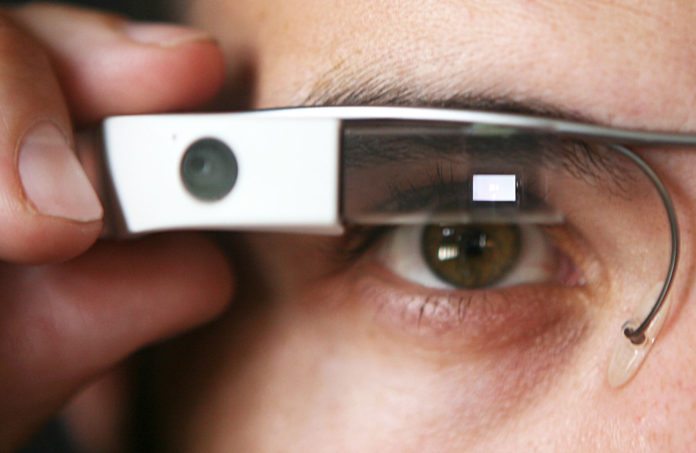“On Your Body” Wearable Computing Devices Series: Part I: Redefining What is Mobile
Redefining What is Mobile
Mobile is no longer limited to the handheld smartphone and tablet. The definition of mobile encompasses any technologies that enable computing while in locomotion, able to move freely or easily without being encumbered by wired connection. In this article we explore “On Your Body” (OYB) wearable computing devices shaping the next frontier of the mobile landscape. Google Glass has taken recent prominence in mass media but OYB devices are an entirely new breed of mobile technologies that is just blossoming.
Before dismissing as futuristic, bleeding edge technology, it’s important to recognize that some of these technologies are at your doorstep, now, not 5 — 10 years out. Putting on blinders might mean that your company could be the next obsolescence. Executives in retail, electronics, publishing and other industries are still licking their wounds from the disruptive nature of the Web. In the new mobile world, Dell (PCs) and Microsoft (PC OS) are trying to stay relevant.
Are wearable devices the next big trend in tech? In the smart glasses segment only, analytics company IHS estimates the head mounted display market could generate $9.4M in sales by 2016, with real growth beginning in 2014 when Google Glass goes on sale to the general public. IHS caveats that the $9.4M is contingent upon compelling apps, without them it drops the estimate to $1M in sales. As we have seen with iOS and Android smartphone and tablet apps, developers love a good challenge.
Wearable devices don’t stop with smart glasses. This is a brand new market that is still being defined. It extends to smart watches, wearable clothing, shoes, and gadgets on your body, limited only by our imagination.
History of Heads Up Display Technology
Before we can explore and appreciate the implications of OYB wearable computing devices, first here’s a primer on the history of heads-up display and emerging trends in wearable technologies.
What is Heads-Up Display (HUD)?
A HUD or also referred to as head mounted display (HMD) is any transparent display that presents data without requiring users to look away from their usual viewpoints. The origin of the name stems from a pilot being able to view information with the head positioned “up” and looking forward, instead of angled down looking at lower instruments. Google is the first technology powerhouse to commercialize a consumer HUD with the introduction of Google Glass, albeit they are assessing market-fit with the developer community.
Figure 1 EyeTap Augmented Reality Glasses

Prior to Google Glass, active HUD research and technology have been applied in the field of military aviation, commercial aircraft, automobiles, and other industries, however the nearest predecessor leading up to Google Glass is the EyeTap. In 1981, Steve Mann created the first version of the EyeTap, which consisted of a computer in a backpack wired up to a camera and its viewfinder which in turn was rigged to a helmet. Since then, EyeTap has evolved to a wearable device that is worn in front of the eye that acts as a camera to record the scene available to the eye as well as a display to superimpose a computer-generated imagery to augment and mediate the reality the user perceives.
Right on the heels of Google Glass are other competitors looking to grab the wearable industry market share.

A project headed by Takahito Iguchi, the former CEO of Tonchidot, a company best known for its augmented reality app Sekai Camera will be releasing Telepathy One, a wearable computing device later this year. What makes Telepathy different from Google Glass is its sleek, stylish appearance with focus on social communication and a lower price point than the developer price of Google Glass. What makes Telepathy One striking is its design. Instead of being worn like eyeglasses, it’s more like a halo that wraps around the back of your head, instead of the front, with the screen hovering over the right eye, secured by earbuds on each side.
Figure 3 Sony’s patent for head mounted display glasses.

Though Google has the center stage in media with Glass for the moment, the biggest tech brands are gearing up for the launch of their own smart glasses.
Microsoft is rumored to bring to market a set of Internet-connected glasses next year. Apple, rumored to be working on the iWatch, will undoubtedly enter the smart glass market with a refined Glass equivalent – iGlass. Sony isn’t sitting on its laurels either. According to patent applications, Sony, too, is actively work on their HMD for each eye.
Then you have existing HUD/ HMD players in the defense industry such as Vuzix looking to cross over to the consumer market with their somewhat crude M100 wearable model.
Figure 4 Vuzix M100 wearable display device.

Trends in Wearable Devices
OYB wearable computing devices are not limited to HUD/ HMD smart glasses. The burgeoning ecosystem extends to smart wearable clothing, watch, shoes and even armor. Though some are closer to commercialization than others, the building blocks for a thriving wearable technologies market is starting emerge.

Apple iWatch might be the next logical progression of mobile evolution. Extending iOS to iWatch enables Apple to employ a tightly interlocking strategy to integrate their growing line up of Apple mobile devices – iPhone, iPad, Apple TV and future wearable devices – across a common operating system.
iWatch brings the added advantage as a wearable monitoring device with health and activity tracking capabilities. That means it’s well suited to gather real-world personal data, measuring thousands of motions and analyzing billions of biometric datapoints. It will be up to the developer community to create apps and hardware plug-in devices to leverage iWatch capabilities to tap a potentially huge market, including but not limited to health screening, biometric testing, home monitoring, health care, health insurance, diet and exercise industries. Consider it Jawbone Up on steroids.
What makes the smart watch market in some ways more appealing is that digital and fashion watches are widely owned personal accessories. Upgrading to an iWatch is lesser of a barrier than adopting smart glasses for one’s face. Analysts forecast that the market for wearable mini computing devices with a full OS will near half a billion units sales a year within the next five years. Consumers will eventually come to expect similar capabilities built into most wristwatches. Expect the new smart watch category to usurp current market leaders in the timepiece segment.
Similar to the smart glasses market, the competitive landscape for smart watches is heating up. Tech heavyweights Google and Samsung both have confirmed that they have a smart watch in the works in their arsenal of wearable device portfolio.
Multi-Directional Backlight Technology
A smart watch does have a downside – it’s small form factor. All that computing power is constrained by the scaled down display real estate. That’s where new research and innovation in the area of display technology comes in to solve visualization issues for smaller devices.
Researchers from HP Laboratories have developed glasses-free, multi-perspective, three-dimensional (3-D) display technology for mobile devices that creates a hologram-like effect.
Figure 6 HP’s Multi-Directional Backlight Technology

The new HP development, called Multi-Directional Backlight Technology, allows users to see 3-D images of the object from multiple angles at a closer distance to the screen is well suited for smart watches and mobile devices.
Static 3-D images produced through this technology is expected to be commercially available in about a year but moving 3-D displays still require significant development.

For the trendsetting, tech gadget consumer, after adorning oneself with a pair of smart glasses and a smart wristwatch, what better way to accessorize then with a pair of smart shoes? Well, maybe not with these high-tech, talking shoes from Google. Google Shoes, built-in with accelerometer, gyroscope, pressure sensor and 250 spoken phrases, can track your physical activity and communicate with your mobile contacts. Most of us are probably not too keen about inanimate shoes auto-tweeting to our friends or smart mouthing us when standing still too long.
There is, however, a key takeaway from Google Shoes – it’s a piece of the wearable device puzzle. Similar to Google Glass, the search giant is exploring use cases in the wearable technology space. As the manufacturing costs of embedded smart sensors come down and miniaturized, it’s another sensor point on the body that can add to richness of biometric datapoints, which leads us to Smart Wearable Systems for the rest of the body.

Smart Wearable Systems (SWS), an extension of wearable electronics and e-textiles, are integrated systems with sensors and actuators nodes on wearable garment that can connect to a mobile app to analyze the biometric data into meaningful insights.
Figure 9 Sensor Node on a Shirt

Sensor nodes can monitor body vital signs, location, motion, posture and local context. The shirt, as depicted in Figure 9, can monitor specific bodily functions such as heart and respiratory activities using sensors that are fitted into the fabric. When actuator nodes are available, it can trigger feedback mechanisms such as vibration as depicted Figure 8 to protect the wearer from risks or to provide corrective actions.
SixthSense is a wearable gestural interface that augments the physical world with digital information and allows user’s natural hand gestures to interact with that information.

The SixthSense MIT Media Lab project, first prototyped by Steve Mann and more recently refined by Pranav Mistry, makes use of a neckworn pendant that contains both a data projector and camera to enable a user to:
- Navigate a map displayed on a nearby surface using hand gestures to zoom and pan
- Draw on any surface by tracking the fingertip movements of the user’s index finger
- Project information onto objects the user interacts with such as a newspaper that can be augmented with projected live video or Internet information
The system recognizes a user’s hand gestures as well as symbols drawn in the air with the index finger to take pictures, check email and project an analog watch on a surface.
The most extensive military program in the wearables arena is the Future Force Warrior system.
Figure 11 Future Force Warrior wearable system

Future Force Warrior is a U.S. military advanced technology demonstration project that aims to create a lightweight, integrated infantryman combat system that uses advanced research from U.C. Berkeley’s BLEEX exoskeleton project and MIT’s Institute for Soldier Nanotechnologies to incorporate advanced technologies in nanotechnology, powered exoskeletons, and magnetorheological fluid-based body armor to provide the soldier with higher force multiplier for combat and carrying capacity. The wearable suit also enhances the soldier’s protection, lethality, and environmental and situational awareness. A fully realized wearable armor is targeted for 2032.
Implications of Wearable Computing Devices
In part II of “On Your Body” Wearable Computing Devices Series, we examine the implications of interconnected wearable devices to individuals, businesses and society.
- OYB integrated personal health monitoring system
- Intersection with sensor-embedded home and office devices and vehicles
- Officeless society
- Practical guidelines for mobile strategy that incorporates wearable computing devices



















